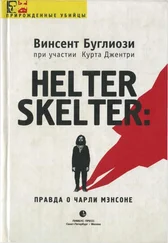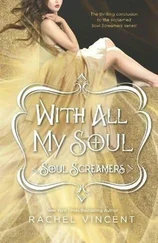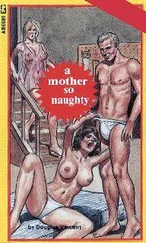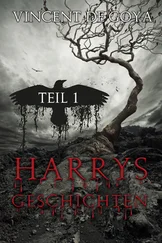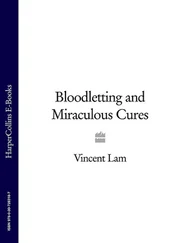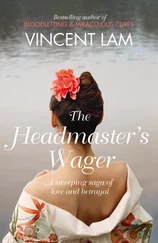Manson had testified that all he wanted was to take his children and return to the desert. After I reminded him that “the only people who can set you free so that you can go back to the desert are the twelve jurors in this case,” and noting that, though he had testified for over an hour, “the jury in this case never heard a single, solitary word you said,” I posed one final question: “Mr. Manson, are you willing to testify in front of the jury and tell them the same things that you have testified to here in open court today?”
Kanarek objected. Older sustained the objection, and I concluded my cross.
To my surprise, Older later asked me why I hadn’t seriously cross-examined Manson. I’d thought the reason was obvious. I had nothing to gain, since the jury wasn’t present. I had lots and lots of questions for Charlie, several notebooks full, if he took the stand in the presence of the jury, but in the meantime I had no intention of giving him a dry run.
However, when Older asked Manson if he now wished to testify before the jury, Charlie replied, “I have already relieved all the pressure I had.”
As Manson left the stand and passed the counsel table, I overheard him tell the three girls: “You don’t have to testify now.”
The big question: what did he mean by “now”? I strongly suspected that Manson hadn’t given up but was only biding his time.
After the defense had introduced their exhibits, Judge Older recessed court for ten days to give the attorneys time to prepare their jury instructions and arguments.
This being his first trial, Ron Hughes had never argued before a jury before, or participated in drawing up the instructions which the judge would give the jury just before they began their deliberations. He was obviously looking forward to it, however. He confided to TV newscaster Stan Atkinson that he was convinced he could win an acquittal for Leslie Van Houten.
He wouldn’t even get the chance to try.
When court resumed on Monday, November 30, Ronald Hughes was absent.
Quizzed by Older, none of the other defense attorneys knew where he was. Fitzgerald said that he had last talked to Ron on Thursday or Friday, and that he sounded O.K. at that time. Hughes often spent his weekends camping at Sespe Hot Springs, a rugged terrain some 130 miles northwest of Los Angeles. There had been floods in the area the past weekend. It was possible that Hughes had been stranded there.
The next day we learned that Hughes had gone to Sespe on Friday with two teen-agers, James Forsher and Lauren Elder, in Miss Elder’s Volkswagen. The pair—who were questioned but not held—said that when it began raining, they had decided to return to L.A., but Hughes had decided to stay over until Sunday. When the two tried to leave, however, their auto became mired down, and they were forced to abandon it and hike out.
Three other youths had seen Hughes on the morning of the following day, Saturday the twenty-eighth. He was alone at the time and on high ground, well away from the flood area. Chatting with them briefly, he appeared neither ill nor in any danger. Polygraphed, the three were found to have no additional knowledge and they were not held. Since Forsher and Elder had last seen Hughes a day earlier, they apparently were not polygraphed and their story was taken at face value.
Owing to the continued bad weather, it was two days before the Ventura Sheriff’s Office could get up a helicopter to search the area. In the meantime, rumors abounded. One was to the effect that Hughes had deliberately skipped, either to avoid argument or to sabotage the trial. Knowing Ron, I seriously doubted if this was true. I became convinced it wasn’t when reporters visited the place where Hughes lived.
He slept on a mattress in a garage behind the home of a friend. According to reporters, the place was a mess—one remarked that he wouldn’t even let his dog sleep there. But on the wall of the garage, neatly framed and carefully hung, was Ronald Hughes’ bar certificate.
Although there were numerous reports that a man fitting Hughes’ description had been seen in various places—boarding a bus in Reno, driving on the San Bernardino freeway, drinking at a bar in Baja—none checked out. On December 2, Judge Older told Leslie Van Houten that he felt a co-counsel should be brought in to represent her during Hughes’ absence. Leslie said she would refuse any other attorney.
On December 3, after consulting with Paul Fitzgerald, Older appointed Maxwell Keith co-counsel for Leslie.
A quiet, somewhat shy man in his mid-forties, whose conservative clothing and courtroom manner were in sharp contrast to those of Hughes, Keith had an excellent reputation in the legal community. Those who knew him well described him as conscientious, totally ethical, and completely professional, and it was clear from the start that he would be representing his client and not Manson.
Sensing this, Manson asked to have all the defense attorneys dismissed (“They aren’t our lawyers; they won’t listen to us”) so he and the girls could represent themselves. He also demanded that the case be reopened so they could put on a defense. They had twenty-one witnesses waiting to testify, he said. Both requests were denied.
Keith had his work laid out for him. Before he could prepare his argument, he had to familiarize himself with 152 volumes of transcript, over 18,000 pages.
Though Older granted a delay until he could do so, he told all counsel: “We will continue to meet every day at 9 A.M. until further notice.”
Older obviously wanted to count heads.
Several days earlier Steve Kay had overheard Manson tell the girls, “Watch Paul; I think he’s up to something.” I made sure Fitzgerald learned of the conversation. One missing attorney was one more than enough.
Neither the air search nor a subsequent ground search of the Sespe area yielded any trace of Hughes. The abandoned Volkswagen was found, with a batch of court transcripts inside, but other papers Hughes was known to have had, including a secret psychiatric report on Leslie Van Houten, were missing.
On December 6, Paul Fitzgerald told reporters, “I think Ron is dead.” On December 7, an all-points bulletin was issued for Hughes, LASO admitting, “This is something you do when you have no other leads.” On December 8, Judge Older went to the Ambassador Hotel to inform the jury of the reason for the delay. He also told them: “It appears fairly certain that you will be sequestered over the Christmas holidays.” They took it much better than expected. On December 12, the search for Ronald Hughes was suspended.
The most persistent rumor was that Hughes had been murdered by the Family. There was, at this time, no evidence of this. But there was more than ample cause for speculation.
Though once little more than an errand boy for Manson, during the course of the trial Hughes had grown increasingly independent, until the two had finally split over whether there should be a defense—Hughes strongly opposing his client’s taking the stand to absolve Charlie. I also heard from several sources, including Paul Fitzgerald, that Hughes was afraid of Manson. It was possible that he showed this fear, which, in Manson’s case, was like waving a red flag before a bull. Fear turned Charlie on.
There could have been several reasons for his murder, if it was that. It may have been done to intimidate the other defense attorneys into letting Manson put on a defense during the penalty trial (one was so shaken by Hughes’ disappearance that he went on a bender which ended in his arrest for drunken driving). Equally likely, it could have been a tactic to delay the trial—with the hope that it would result in a mistrial, or set the stage for a reversal on appeal.
Читать дальше

